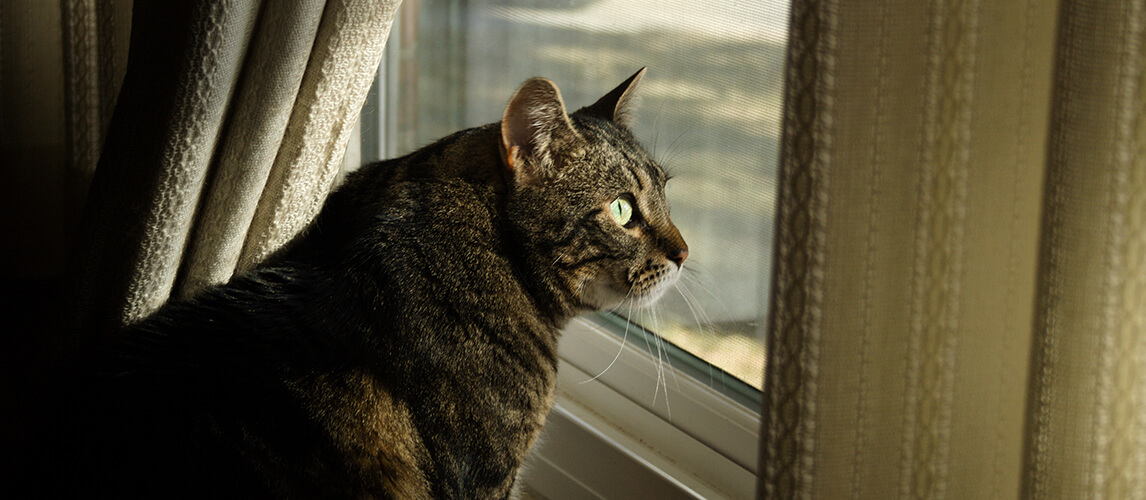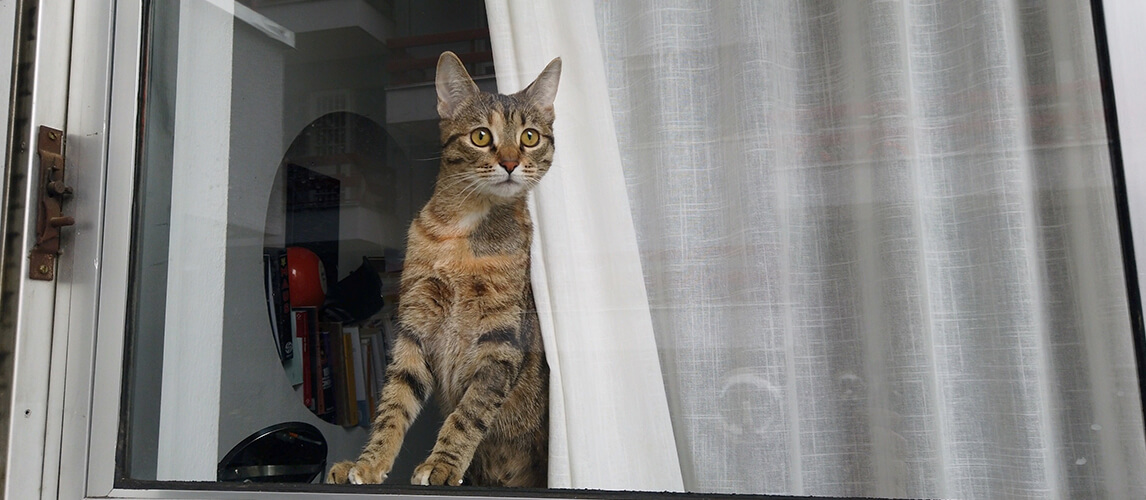It’s only since cats became domestic animals that they developed ways of communicating with their pet parents as both humans and felines rely on vocalizing to talk to one another. We know that cats meow, hiss, and purr but if you’re wondering what chirping is you’ve come to the right place. Learn everything to know about chirping sounds right here!
What is Cat Chirping?
The chirping sound, or ‘chattering’ to some, is one of many cat vocalizations used to communicate with others. This sound is used by all felines and not just adult cats and is commonly made when they spy on prey or even when they see their beloved pet parents.
The Cat Chirping Noise Explained
Smaller chirps and trills are made when a cat pushes air over its vocal cords with its mouth closed. Eventually, depending on how excited they are, this will turn into chirping/chattering through their teeth and open mouth.

What does a Chirp Sound Like?
Cat chatter sounds almost similar to that of birds chirping. It is speculated that cats chirp at any form of small critter and is not purposefully done to mimic a bird (It just so happens that birds are sighted more often than other critters).
Why Do Cats Chirp?
In regards to cats chirping at birds, this area is widely speculated. Outdoor cats have yet to be seen chattering and will stealthily stalk, hunt, and ambush prey without so much as a sniff. However, an indoor cat will chirp and chatter more and more the longer they stare at the tiny critter.
With this in mind, it is theorized that cats chatter at prey in frustration. Being stuck inside, unable to act on their hunting instincts can be a cause of irritation which is likely a cause behind their chatter. However, others believe that the cat chirping occurs when the feline is excited at the sight of their prey as they can make similar noises upon seeing their owners.
With this in mind, indoor cats can chirp at a number of things. They may chatter when receiving attention from their owners, when playing with other cats, or when you’re about to break out the long-awaited cat food. So to clarify, chirping doesn’t necessarily mean that your cat is unhappy or frustrated.
Kitten Chirping
Like many other animals, cats will learn a lot of behaviors by watching their mothers and will understand chirping from an early age. This is because a mother cat makes chirping noises to playfully catch their kitten’s attention. Most cats will continue to make these sounds as they get older but it’s not uncommon for others to stop completely.
Do all Cats Chirp?
Cats of all ages, sizes, and breeds are known to chirp. In fact, it is speculated that it’s a universal sound that even wild cats such as tigers make.
How Chirping Differs From Other Vocalizations
Your feline friend will have different ways of talking to their owners and chirping is just one of many. In fact, cats communicate with a number of vocalizations as well as body language cues. However, did you know about the three categories of cat vocalizations? Below we have detailed each type and what they mean.
The Three Catagories Of Cat Vocalizations:
Mouth Closed
Closed mouth noises are those such as purring or trilling. If you listen closely to a cat’s purr you will notice that it’s one constant sound and can be of any pitch or intensity depending on the individual feline. Trilling, on the other hand, tends to be a high-pitched, unique sound that occurs in short bursts.
Mouth Open
Open mouth vocalizations tend to be sounds of aggression or fear such as hissing, yowling, snarling, and growling. Most of these vocalizations will be a low pitch with the exception of yowling which, as a cat owner, is not a nice sound to behold. Yowling tends to be a painful, dramatic sound that continues depending on the situation.
Open Mouth Then Closed
An example of this type is the classic meow. Kitties will open their mouths to communicate but will then close them shortly after. Cat owners will learn to hear the differences between what their cat’s meows mean. One meow might mean ‘feed me’ whereas another might mean ‘hello!’ or ‘pet me!’.
Chirping and Body Language
When you observe your cat chirping you may want to understand more about their underlying emotions or motivations. By taking note of your cat’s overall body language you will be able to easily recognize how they’re feeling.
Angry/Frustrated
Anger and irritation are not difficult to spot at all in felines. Agitated cats may flick their tails in irritation. The hair on their tail may also be standing on end similar to the appearance of a feather duster. If approached by an unsolicited party, their pupils will also dilate and they will flatten their ears. In addition, they may sink into a crouched position and begin to hiss or growl.
A chirping cat sitting at a window glaring at outdoor animals may attempt to swipe if the critter gets too close. Some cats will often turn to growl in replace of chirping but this isn’t common.
Playful
A playful cat may give out mixed signals initially. Their tails will whip around erratically their ears may twist and turn, and their pupils will dilate but you can soon confirm their impish mood by engaging them in a play session.
Happy/Content
When a cat is feeling chipper and chirps, it will adopt a relaxed posture. This is reflected by ears pointed forward and standing up, its tail held high, and fur unmoved. Relaxed cats are also happy and willing to sleep and sit next to owners and won’t hide in small, hard-to-reach areas.
If you want to learn more about your cat’s body language and behaviors, take a look at this in-depth guide.
What To Do When Your Cat Chirps
No need to worry. Cat chirping is not something that pet parents should be concerned about as it’s a natural behavior but if you want to find ways to appease them take a look at the methods below.
Cat Toys
Toys are a great way to occupy cats with a strong prey drive in the house. Squeaky toys are perhaps the best choice as the internal squeakers replicate the noises made by smaller critters such as a mouse, bird, or squirrel.
In addition to this, playing can help you form a bond with your cat and help to stimulate them mentally. If you’re looking for your cat’s new favorite toy, take a look at the handy buying guides available at PetSide here.
Offer Them Luxury
If your cat loves to bask in the sun’s warmth or people watch, there are handy items you can purchase to make their time in a window more relaxing. A window perch can offer cats a comfortable place to relax. Take a look at our guide detailing the best window perches.

FAQs:
Q: What does cat chirping mean?
A: There’s no definitive answer as to what chirping means. However, most professionals are certain that cat chirps are a sign of frustration and/or affection depending on the circumstance/what they cat directs their chirps at.
Q: Why does my cat chirp?
A: Cats chirp for a number of reasons. An adult cat may chirp at the window after observing smaller animals but they may also chirp when it’s time for their food bowl to be filled up.
Q: Why do cats chirp but not meow?
A: Meowing is a general form of communication that cats learn to use frequently from an early age. Chirping in particular is a way cats can tell you they are especially excited.
Q: Are cat chirps a good thing?
A: Cat chirps are completely normal and nothing to worry over. The same goes for kittens. It’s an adorable vocalization that’s meant to communicate with those around them.

